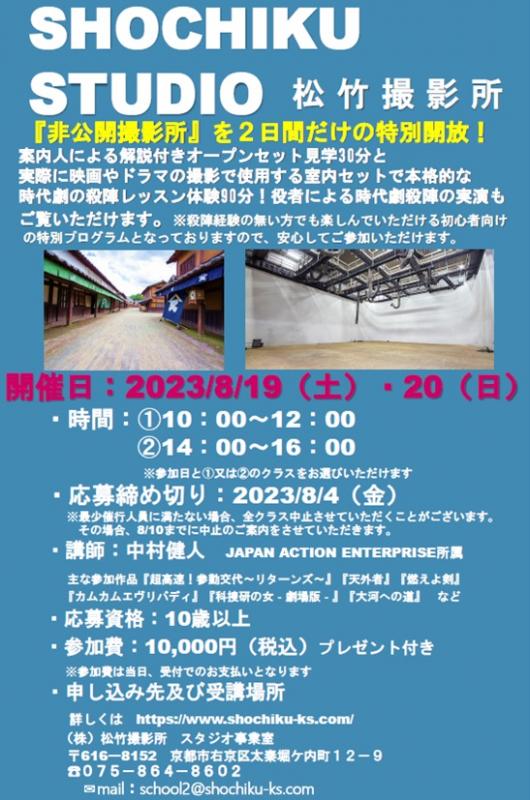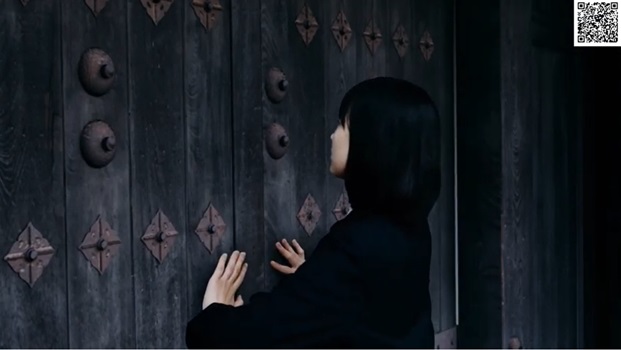ここから本文です。
株式会社松竹撮影所(京都企業紹介)Shochiku Studio Co., Ltd.
知恵の経営、元気印、経営革新、チャレンジ・バイの各認定等を受けた府内中小企業を紹介するページです。
非公開撮影所「松竹」での2日間だけの本格時代劇殺陣レッスン Authentic period drama sword fighting lesson for 2 days only at the closed shooting studio “Shochiku”
(2023年7月12日更新、ものづくり振興課 足利・恩地・中尾)
申込みなどについてはこちらのチラシをご覧ください!
バーチャルプロダクションプロジェクト Virtual production project
(令和3年3月10日、ものづくり振興課 足利・丸山・丸田)
東映株式会社京都撮影所(外部リンク)、株式会社松竹撮影所(外部リンク)の合同プロジェクトです。
映画の都・京都 Kyoto, the capital of movies
(令和2年10月2日、ものづくり振興課 足利、丸田)
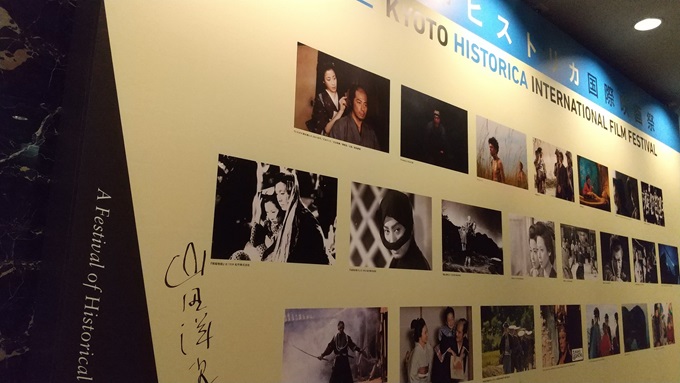
京都ヒストリカ国際映画祭(外部リンク)は、(1)世界唯一の歴史映画祭、(2)作り手による映画祭、(3)京都「映画字幕ワークショップ」卒業生による字幕付きです。
東映株式会社京都撮影所(外部リンク)スタジオ事業部長の高橋さん、株式会社松竹撮影所(外部リンク)京都製作部長の永島さんに、お話をお伺いしました。We spoke to Mr. Takahashi, director of Toei Co., Ltd.'s Kyoto Studio, and Mr. Nagashima, of Shochiku Photo Studio.
「時代劇」は、セットもロケ地も人もノウハウも凝縮された京都で! The "historical drama" is set in Kyoto, where the sets, locations, people, and know-how are all concentrated!
--いつも大変お世話になっているのですが、改めて日頃のお仕事のことを教えてください。Please tell us about your daily work.
高橋)東映の京都撮影所には大きく3つの部門があります。まず、「プロダクション製作部」では、自社の劇場で上映するための、自社の作品を製作しています。次に、私の属する「スタジオ事業部」では、他社の劇場やテレビ放送で流すためのものを製作するために、当社の施設を貸し出しています。3つ目の「俳優部」では俳優を貴重な財産として育成しています。Toei's Kyoto studio has three major divisions. First, our Production Department produces our own works for screening at our own theaters. Next, the Studio Division, to which I belong, rents out our company's facilities to produce products for other companies' theaters and television broadcasts. The third part, the Actors Club, develops actors as valuable assets.
--スタジオ事業は、施設を貸し出す?Does the studio business rent out facilities?
高橋)ロケ地探しやスタッフの手配などのプロダクションサービスも行います。We also provide production services such as finding locations and arranging staff.
--ロケ地と言えば、府でも「ロケスポット京都(外部リンク)」事業で紹介をしています。地域のご理解ご協力が必要ですし、制作側も「とっておき」の場所は秘密にしておきたいというケースもあり、何でもかんでも紹介できるというものでもないのですが、近年は、養鶏場跡など大規模ロケ地も整ってきました。In recent years, large-scale filming locations, such as the remains of a poultry farm, have been developed.
高橋)あそこは、映画『本能寺ホテル』爆破シーンでも使われていましたが、よく使っていますよ。4.7ヘクタールと広大で、現代的な構造物が広範囲で視野に入らない関西では珍しいロケーションです。また、京都市内から車で1時間程と近いのも魅力ですね。That area was also used in the explosion scene of the movie ``Honoji Hotel,'' so it's used often. At 4.7 hectares, it is a rare location in the Kansai region, where modern structures are far out of sight. Another appeal is that it is only about an hour's drive from Kyoto city.

--スタジオ事業を頼って来られるジャンルは?What genres can you rely on for studio business?
高橋)「京都で撮りたい」と言って来られるのは、ほぼ「時代劇」ですね。Most of the times people come to me and say, ``I want to film in Kyoto,'' are for period dramas.
--ほほう。やはりそうなのですか?!現在開催されている「第12回京都ヒストリカ国際映画祭(外部リンク)」のオープニングトークで、山田洋次監督がおっしゃってましたね。映画の中身に直接関係のないことですが、その場でスタッフの方に、江戸時代の生活様式を勉強したい、あんどんに火を付けたらどのくらいの明るさ(暗さ)なのか、とお尋ねになったら、その場で火打ちでささっと火を付けられて大変感心した、そういった技術が残っているのは京都だけだと。永島さん、いかがでしょう。ご自身のお仕事のご紹介も合わせてお願いします。Director Yoji Yamada said that. Although it was not directly related to the content of the movie, I asked the staff on the spot that I wanted to learn about the lifestyle of the Edo period and how bright (dark) it would be if I lit a Andon on fire. I was very impressed when I was able to quickly light a fire with flint on the spot, and was told that Kyoto is the only place where this technique still exists. Mr. Nagashima, what do you think? Please also introduce your own work.
永島)はい。私自身は、「プロダクション事業」と「スタジオ事業」の両方を担当しています。さて、たしかに、オープニングのトークショーで山田監督は「京都じゃなきゃできなかった」とおっしゃってましたね。「たそがれ清兵衛」は山田監督の事実上の初の時代劇映画でもあるわけですが、製作本数で上回る東京(大船)のスタッフと、時代劇作りのノウハウを有する京都(太秦)もスタッフが、競い合いながら互いの良さを発揮したと聞いています。yes. I am personally in charge of both the production business and the studio business. Now, it's true that in the opening talk show, director Yamada said, ``We couldn't have done it without being in Kyoto.'' "Twilight Seibei" is director Yamada's first historical drama film, but the staff in Tokyo (Ofuna), which has produced more films, and the staff in Kyoto (Uzumasa), which has the know-how of creating historical dramas, I heard that they brought out each other's strengths while competing.
--とても素晴らしい作品ですよね。本府でも、京都文化博物館が中心となって、東映さん、松竹さんにお世話になりながら実施してる「フィルムメーカーズラボ(外部リンク)」において、国内外から多くの方が京都の時代劇制作について学びに来られていますね。Many people from Japan and abroad come to learn about historical drama production in Kyoto.
永島)映画監督、脚本家、カメラマン、プロデューサーなど多岐に亘る方がいらっしゃいます。時代劇セットはもちろん、美術、照明、衣装なども含め、プロの方法論で本格的な時代劇をワークショップ形式で体験できます。We have a wide variety of people including movie directors, screenwriters, cameramen, and producers. You can experience an authentic historical drama in a workshop format using professional methodologies, including not only historical drama sets but also art, lighting, costumes, etc.
--今回の「京都ヒストリカ国際映画祭(外部リンク)」でも、凱旋の方がいらっしゃいましたね。At this year's Kyoto Historica International Film Festival, there were some who made a triumphant return.
高橋)「オルジャスの白い馬」ですね。2011年に「フィルムメーカーズラボ(外部リンク)」に参加された竹葉リサさんの日本・カザフスタン共同制作作品ですね。It's ``The White Horse of Orjas.'' This is a Japan-Kazakhstan joint production by Lisa Takeba, who participated in Film Makers Lab in 2011.
--京都の競争力について話を戻しますと、時代劇制作のノウハウも詰まっており、制作人材も揃っており、ワンストップで効率的に制作できるというのが強みかなと思いますが、近年は、関東、東北にもオープンセットがあり、京都に来なくても時代劇が撮れるような外部環境も生じてきているのではと思いますが、いかがでしょうか。Returning to Kyoto's competitiveness, I think one of its strengths is that it has a wealth of know-how in producing period dramas, has a large number of production personnel, and can produce efficiently in a one-stop shop. , there are open sets in Tohoku as well, and I think an external environment is emerging where historical dramas can be filmed without having to come to Kyoto.What do you think?
高橋)まず、京都の場合は、オープンセットと我々のような人材が一緒におりますね。さらに、撮影所近辺に関係者がたくさんいますし、東京の方からは「京都の方が人に出会える!」と好評をいただいています。それに、ロケ地も近い。省力的に制作するにも向いていますし、移動時間が少なく役者さんにも優しいですしね。First of all, in the case of Kyoto, open sets and people like us are together. Furthermore, there are many people involved near the filming location, and people from Tokyo say, ``You can meet more people in Kyoto!'' Plus, it's close to the filming location. It's suitable for labor-saving production, and it's also kind to the actors because there's less travel time.
映画制作の標準化で日本映画の課題克服を! Overcoming challenges faced by Japanese films through standardization of film production!
--さて、松竹さんのホームページによると、エジソンの会社が開発した、箱を覗いて動く映像を見る「キネマトスコープ」が日本に持ち込まれたのが1896年(明治31年)。大きなスクリーンに映像を映写できる「シネマトグラフ」がフランスから輸入されたのが翌1897年。日本人初の映画撮影として、浅野四郎氏が「化け地蔵」など短編映画を撮影したのが1898年。各家庭にテレビがある、いやむしろ、スマホで様々な「映像」コンテンツを見られる現代と違い、もともと、劇場等に集まって芸術を視聴してきた人類の歴史の延長上に、映画が生まれたわけですね。According to Shochiku's website, the ``kinematoscope,'' which was developed by Edison's company and allows you to see moving images by looking into a box, was brought to Japan in 1896. The following year, in 1897, a ``cinematograph'' that could project images onto a large screen was imported from France. In 1898, Shiro Asano became the first Japanese to shoot a movie, making short films such as ``Bake Jizo.'' Unlike today, when every home has a TV, or rather, we can watch a variety of "video" content on smartphones, movies were originally created as an extension of human history of gathering at theaters and other venues to watch art. hey.
永島)そうですね。最近の映画は、映像技術ひとつとっても、技術革新、デジタル化が進んでいます。映画館もシネコンが定着し、上映中の出入りも原則できないなど、見る側の集中力も高まる仕組みが定着してきました。かつては、観客も、例えばみかんを食べながら見るとか、ぺちゃくちゃ反応して笑いながら見るとか、「よっ!!寅さん、待ってました!!」とかけ声をかけたりと、映画がもっと気軽な娯楽であり、観客の一体感も高かったのだと思います。I agree. In recent movies, technological innovation and digitization are progressing, even when it comes to video technology. Cinemas have become established as multiplex complexes, and systems have become established to increase the concentration of viewers, such as not allowing anyone to enter or leave during screenings. In the past, movies were more of a casual form of entertainment, with audiences watching them while eating mandarin oranges, reacting with laughter while watching, or shouting, ``Yo!! Tora-san, I've been waiting for you!'' I think there was a strong sense of unity among the audience.
--初期の頃は特に、映画でも歌舞伎の影響で女形が女性役を演じていたなど、人形浄瑠璃や歌舞伎、歌舞伎の改革運動として勃った新派等の他の芸術の影響を受けていたそうですが、日本にシネマトグラフが持ち込まれた時からいらした説明者、後の「活動弁士」は、日本独自だそうですね。これも落語や講談などの影響もあったのかもしれませんが、先日のCMEXレセプションでも現代の活弁士さんにおいでいただき、とても盛り上がりました。ハリウッドなど海外に倣いつつ、日本の芸術とも結びつく「ハイブリッド」性は、映画に限らず日本のお家芸ですね。In the early days, it was particularly influenced by other arts such as ningyo joruri, kabuki, and Shinpa, which arose as a reform movement of kabuki, such as the influence of kabuki, in which onnagata played female roles in movies. That's right, but I hear that the explainers who were needed from the time cinematographs were brought to Japan, later known as ``katsu benshi,'' are unique to Japan. This may have been influenced by rakugo and kodan, but the other day at the CMEX reception, we had a modern katsu benshi performer, and it was very exciting. The ``hybrid'' nature of imitating Hollywood and other countries while also connecting Japanese art is a specialty of Japan, not just movies.
高橋)そうですね。逆に悪い面を敢えて言えば、日本はガラパゴスですね。新型コロナウイルス感染症が蔓延した際にも、ドイツのメルケル首相はいち早く「ドイツは文化の国だ」と発信し、文化的イベントの重要性を示しておられましたが、日本では映画の社会的地位が高いとは言えません。I agree. On the other hand, if I had to say the bad side, Japan is like the Galapagos. Even when the new coronavirus infection spread, German Chancellor Angela Merkel was quick to say, ``Germany is a country of culture,'' showing the importance of cultural events, but in Japan, the movie community I can't say that I have a high status.
--それは製作費への支援が少ないということですか?Does that mean there is less support for production costs?
高橋)そうですね。Yes.
--本府では、優秀な映画企画のパイロット版づくりを支援する「京都映画企画市(外部リンク)」に取り組んできていますが、カンヌやベネチアでも、新人育成制度、助成制度で構想段階からも支援があるそうですね。そう言えば、今回の「ヒストリカ(外部リンク)」でも、ヒストリカワールド作品の監督とのオンラインQ&Aをやってますが、私がたまたま観た、英国で撮られた「荒地の少女グウェン」の監督も製作費の公的助成を受けられたとおっしゃってましたね。Kyoto Prefecture has been working to support the creation of pilot versions of excellent film projects, and I hear that Cannes and Venice also provide support from the conceptual stage through new talent training systems and subsidy systems. Come to think of it, in this edition of ``Historica,'' we are holding an online Q&A with the directors of Historica World films, and the director of ``Gwen, the Girl on the Waste Land,'' which was filmed in England and which I happened to see, also received a public share of the production costs. You mentioned that you were able to receive financial aid.
高橋)そうなのです。また、製作側の問題としては、韓国などもそうですが海外の作品は、最初から海外展開を見据えて作られています。That is right. Another problem on the production side is that overseas works, like those in Korea, are made with an eye toward overseas expansion from the beginning.
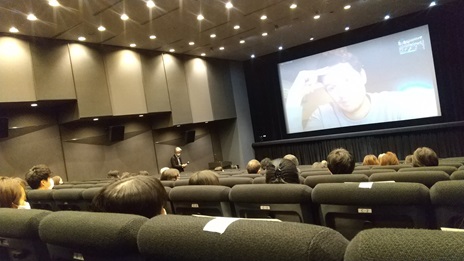
オンラインQ&Aの様子
--どういうことですか?What do you mean?
高橋)例えば海外展開を見据えて、海外の資金を獲得するためには、映画企画の段階で海外に理解してもらう必要があるわけですが、台本のフォーマット自体が日本は異なっているし、各社でもバラバラなんです。映画製作の多額の資金を獲得するために、日本では製作委員会方式をとられるケースが多く、そうなると、どうしても制作現場にお任せしっぱなしになるということの結果でもありますが、こうした標準化を進める必要があります。For example, in order to acquire overseas funds with an eye on overseas expansion, it is necessary to have overseas countries understand the film at the planning stage, but the script format itself is different in Japan, and each company has different formats. What is it? In order to obtain large amounts of funding for film production, in Japan there are many cases in which the production committee system is used, and in this case, it is inevitably left up to the production site, but it is important to promote this standardization. is needed.
--なるほど。I see.
高橋)しかし、近年は、最初から海外でデビューする若手監督も出てきました。ハリウッド映画を超える興行収入を生み出したコメディ映画を作られたりしています。However, in recent years, some young directors have made their debut overseas. He has even made comedy films that have generated more box office revenue than Hollywood films.
日本の映画を支えてきた京都の礎 Kyoto's foundation that has supported Japanese movies
--いいですね。では、ガラパゴス化が進んだ(笑)日本映画の歴史を少し振り返りたいのですが、たしか日本に撮影所が登場したのは、ハリウッドと同時期くらいでしたよね?日本最初の撮影所は1908年(明治41年)に吉沢商店が東京目黒に作られましたが、それに続いて自社製作を始めたのが、京都で外国映画の輸入を営んでいた横田商会。同じ年に、日本最初の映画監督であり、後に日本映画の父と呼ばれる、当時、芝居小屋「千本座」経営者の牧野省三氏に依頼し、その第1作目「本能寺合戦」を京都市左京区の真如堂で撮影、発表。それら吉沢商店、横田商会など4社で日本初の本格的映画会社「日本活動写真株式会社」つまり「日活」を作ったのが1912年。東京と京都の二条城西櫓下に撮影所を設けました。これは、ハリウッドのフォックス、ワーナー・ブラザーズなど(前身の会社)と同時期の設立だとお聞きします。Sounds good. Now, I'd like to look back a little at the history of Japanese film, which has become more Galapagos-like (lol). I think film studios started appearing in Japan around the same time as Hollywood, right? Japan's first film studio was established in 1908 (Meiji 41) by Yoshizawa Shoten in Meguro, Tokyo, followed by Yokota Shokai, a Kyoto-based company that imported foreign films. In the same year, he commissioned Shozo Makino, Japan's first film director and later known as the father of Japanese cinema, who was then the manager of the playhouse ``Senbonza'' to produce his first film, ``The Battle of Honnoji,'' in Kyoto. Photographed and presented at Shinnyodo in Sakyo Ward, Ichi. In 1912, these four companies, including Yoshizawa Shoten and Yokota Shokai, established Japan's first full-fledged film company, Nippon Katsusha Sha Co., Ltd., or Nikkatsu. We set up photo studios under the west turret of Nijo Castle in Tokyo and Kyoto. I hear that this company was established at the same time as Hollywood companies such as Fox and Warner Brothers (predecessor companies).
高橋)そうですね。牧野さんが見出した「目玉の松っちゃん」こと尾上松之助さんは、日本映画最初のスターとしてその後1,000本以上の作品に出演。しかし、牧野さんは、やがてよりリアルな殺陣を求める顧客の要求に応じ、日活から独立して、バンツマこと、阪東妻三郎さんなど多数のスターを輩出するとともに、彼らの多くも牧野さんに倣って独立プロを擁立するなど、京都の映画都市としての基盤が作られました。I agree. Mr. Makino discovered Matsunosuke Onoue, also known as ``Matsu-chan,'' who went on to appear in more than 1,000 films as the first star of Japanese cinema. However, Mr. Makino eventually became independent from Nikkatsu in response to customer demands for more realistic sword fighting, and went on to produce many stars such as Bando Tsumasaburo, also known as Bantsuma, and many of them also followed in his footsteps. The foundation for Kyoto as a film city was laid by supporting independent producers.
--一方、「松竹」は1920年に「松竹キネマ合名社」を設立されました。On the other hand, "Shochiku" established "Shochiku Kinema Gmeisha" in 1920.
永島)「ヒストリカ」のオープニングで、当社の会長の大角が申してましたとおり、松竹は1895年に京都の新京極の劇場からスタートしています。そこに点在する土地は今でも手放さずにいます。映画を手掛けたのは創業から25年後であるのですが、映画への進出に当たっては海外視察など研究を重ねていたと聞いています。As our chairman, Osumi, said at the opening of ``Historica,'' Shochiku started in 1895 with a theater in Shinkyogoku, Kyoto. The land scattered there is still intact. The company started working on movies 25 years after its founding, and I heard that they had done a lot of research, including overseas tours, before venturing into movies.
--ユニバーサル社を視察し、撮影所が丸ごと都市になっていて、世界中にフィルムが輸出されることも踏まえ、満を持してと、ものの本で読んだことがあります。日活がリアルで重厚路線であったのに対し、松竹は都会風で洗練されたもの、という傾向があったとお聞きしますし、俳優養成所を建てて女優を次々と輩出されたり、独立プロでは設備の問題もあり難しく、なかなか普及しなかったトーキーを日本最初に成功させた作品『マダムと女房』を1931年に作られたり、先鋭的な取組をなさってこられたのですね。I read about this in a book when I toured Universal Studios and realized that the entire filming studio was a city, and that film was exported all over the world. I heard that while Nikkatsu was more realistic and serious, Shochiku tended to be urbane and sophisticated. However, due to problems with the equipment, it was difficult to make the talkies widely available, but in 1931 you created Madam and the Wife, the first work in Japan that succeeded in making talkies, and you have been making pioneering efforts.
永島)その後も日本初のカラー作品『カルメン故郷へ帰る』など、時代や技術の変化を先取りしてきた歴史があり、我々も見習わなければと思っています。Since then, they have a history of anticipating changes in the times and technology, such as Japan's first color work, ``Carmen Returns to Home,'' and I believe we should follow their example.
--日活、松竹、1930年代に設立された「東宝」も加えた3社体制は、やがて日活等が合併して大日本映画製作会社(大映)、松竹、東宝の3社体制に名を変えつつも、戦前の日本は、アメリカに次いで世界で2番目に多く、年間500本のフィルムを製作していたそうです。また戦後は、「東映」が設立され、京都の撮影所を中心に、30年代の日活を凌駕する勢いで時代劇を製作。松竹は庶民的な人情路線、女性向けメロドラマを基本方針に定められました。一方、東映さんは・・・ The three-company system, which included Nikkatsu, Shochiku, and Toho, which was established in the 1930s, eventually merged with Nikkatsu and others and changed its name to Dainippon Film Production Company (Daiei), Shochiku, and Toho. It is said that before the war, Japan produced 500 films a year, the second largest production in the world after the United States. After the war, ``Toei'' was established, and produced period dramas centering around its studio in Kyoto, surpassing Nikkatsu in the 1930s. Shochiku's basic policy was to create melodramas aimed at women, along with people's humanity. On the other hand, Toei...
高橋)東映の母体である東横映画は、1938年に設立され、東急電鉄沿線に映画館を経営していました。それが戦後、大陸から引き揚げてくる映画人の救済のためということもあって立ち上がり,ゼロからのスタートとして白羽の矢が立ったのが、京都太秦の大映の第二撮影所を借り受けるということでした。Toyoko Eiga, the parent company of Toei, was founded in 1938 and operated movie theaters along the Tokyu Corporation lines. After the war, it was decided to help the filmmakers who had been brought back from the continent, and the decision was made to start from scratch by renting Daiei's second studio in Uzumasa, Kyoto. did.
--そうだったのですね。また、日活は大映と関係を解消し、製作・配給・興行とも一手に担い、映画館で上映する作品も映画会社が決定権を握り、その年間の上映日程が映画会社のスケジュールに沿って上映する「プログラムピクチャー」方式を導入。That's right. In addition, Nikkatsu has dissolved its relationship with Daiei, and is solely responsible for production, distribution, and performance, and film companies have the power to decide which films are shown in movie theaters, and the annual screening dates are set according to the film company's schedule. Introduced the ``Program Picture'' method.
高橋)俳優さんも大きな目立つ顔の方から、長身で手足の長い石原裕次郎さんのような方が人気を博すようになりました。さらに、1950年代は、黒澤明監督が「羅城門」でヴェネティア国際映画祭のグランプリを、溝口健二監督も3年連続ヴェネティアで受賞。黒澤明監督は、東宝と関係が強い方ですが「羅生門」は大映ですね。東映京都撮影所とはいろいろあったそうですが。溝口監督は、大映(日活)や松竹との関係が深い方ですね。こうして、日本映画は1960年に製作本数547本とピークを迎えます。Actors like Yujiro Ishihara, who are tall and have long limbs, have become more popular than those with large, prominent faces. Furthermore, in the 1950s, director Akira Kurosawa won the Grand Prix at the Venice International Film Festival for Rashomon, and director Kenji Mizoguchi also won the Grand Prix at Venice for three consecutive years. Director Akira Kurosawa has a strong relationship with Toho, but Rashomon was made by Daiei. It seems that there were various things going on with Toei Kyoto Studio. Director Mizoguchi has close ties with Daiei (Nikkatsu) and Shochiku. Thus, Japanese film production reached its peak in 1960 with 547 films produced.
--1950年代は時代劇も大人気だったそうですね。Historical dramas were also very popular in the 1950s.
高橋)1955年の年間174本をピークに年間150本程度で製作されていたとお聞きします。I hear that production peaked at 174 pieces per year in 1955, and then produced about 150 pieces per year.
--ピークの頃の時代劇制作本数は尋常でないと思いますが、そこで、時代劇の効率的な生産ノウハウが蓄積されたわけですね?!I think the number of historical dramas produced at its peak was unusual, but that's where you accumulated the know-how to efficiently produce historical dramas, right? !
高橋)京都の東映では誰もが走ってるなどという噂もあったそうですが、たしかに、時代劇は通常よりも手間がかかりますからね。そんな中で、少々雑な台本であっても、殺陣師グループがある意味パターン化された殺陣を披露して対応したり、それぞれのプロがたくさんいたということが大きいですね。当時は、老若男女がターゲットでしたから、あまり生々しい殺陣だと子供が見られないですし。それに、人気のスターが居たから成り立っていた面もあるかもしれませんね。ライティングもスターの顔が映えるように、あまり陰影が出ないような手法を敢えてとっていた時期もありますね。There was a rumor that everyone was running at Toei in Kyoto, but it's true that historical dramas require more work than usual. Under such circumstances, even if the script was a little sloppy, the swordfighters responded by performing a certain pattern of swordfights, and it was important that there were many professionals of each type. At that time, the targets were men and women of all ages, so if the sword fights were too graphic, children wouldn't be able to watch them. Also, it may have been possible in part because it had a popular star. There was a time when we deliberately used lighting techniques that didn't cast too many shadows so that the stars' faces would stand out.
--しかし、1960年以降、日本映画は下降路線を辿ります。高度成長期でテレビの普及などレジャーの選択肢が広がったことが大きいのでしょうね。厳しい言い方をすれば、従来方式が大繁盛であった故に、イノベーションのジレンマに陥ってしまったということかもしれませんが。However, after 1960, Japanese films went on a downward trajectory. This is probably due to the expansion of leisure options such as the spread of television during the period of high economic growth. To put it harshly, it may be that we have fallen into an innovation dilemma because the conventional method was so prosperous.
高橋)そういう面はありますね。東映は、1960年代に入ると、時代劇に加え、任侠映画も多く製作しました。松竹は1969年に山田洋次監督の『男はつらいよ』が始まりました。There are aspects like that. In the 1960s, Toei produced many chivalry films in addition to historical dramas. Shochiku began production in 1969 with director Yoji Yamada's ``Otoko wa Tsurai yo.''
映画の都・京都 Kyoto, the capital of movies
--テレビの時代劇は、ちょうど私の子ども時代で、よく親子で家族団らんで拝見しました。懐かしいし、良い時代でした。しかし、それもやがて、若者離れによりスポンサーが付きにくくなってということをお聞きします。「伝統芸能ではない新しい時代の劇」というネーミングの時代劇にとって、少し皮肉にも思いますが。しかし、時代劇に限りませんが、映画とテレビの違いなどを知ると、とても過去の映画の時代劇は味わい深いですね。When I was a child, I often watched period dramas on TV with my family. It was a nostalgic and good time. However, I hear that over time it became difficult to get sponsors as young people moved away. I think it's a bit ironic considering the name of the historical drama is ``a new era drama that is not a traditional performing art''. However, it is not limited to historical dramas, but once you know the differences between movies and television, historical dramas from the past can be very enjoyable.
高橋)テレビは1つのシーンで複数のカメラを設置し、様々な角度で撮影しますが、映画は基本1台ですし、だからライティングも違いますね。In television, multiple cameras are set up to shoot a single scene from various angles, but in movies, there is basically only one camera, so the lighting is also different.
--そう。だからこそ、逆にグッと入り込んで見てしまいますね。余白というか、空気というか、逆にそれをすごく感じます。小説などと少し似ているのかもしれません。今回の「ヒストリカ(外部リンク)」でも、そういう目線で見るととてもおもしろいです。やっぱり専門家の解説を聞くと断然面白みが増しますね!Yes. That's why I really want to get into it and watch it. I feel like it's a blank space or an atmosphere, but I really feel it. It may be a little similar to novels. This time's "Historica" is also very interesting if you look at it from that perspective. After all, listening to an expert's explanation definitely makes it more interesting!
高橋)ありがとうございます。冒頭に申しました「スタジオ事業部」的な目線というか、京都にいかに撮影を呼び込むか、だったら映画祭を開催し、そこに関係者を連れてこようということで始まりました。世界唯一の歴史映画祭、作り手による映画祭であり、京都「映画字幕ワークショップ」卒業生による字幕を付けています。あくまで産業支援として実施していますので、海外の歴史映画が日本の時代劇にどう反映させられるか、日本の古い時代劇から今学び取れることは何か、といった、作り手のための目線で、作品を選定しています。もちろん、それは一般の方にはより大いに楽しめる作品だということだと思っています。Thank you. As I mentioned at the beginning, it started from the studio division's point of view, thinking about how to attract filming to Kyoto, and then holding a film festival and bringing the people involved there. It is the world's only historical film festival, a film festival run by creators, and subtitles are provided by graduates of the Kyoto Film Subtitles Workshop. Since we are implementing this project purely as an industry support, we are looking at things from the perspective of filmmakers, such as how overseas historical films can be reflected in Japanese historical dramas, and what we can learn from old Japanese historical dramas. Selecting works. Of course, I believe that this means that the general public will enjoy this work even more.
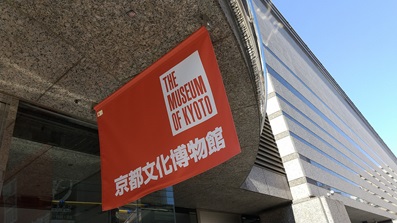
京都ヒストリカ国際映画祭(外部リンク)、京都文化博物館で開催中
--また、映画は特に、時代劇もそれ以外も、むしろ逆に先鋭的なものも輩出されてきています。In addition, movies in particular, both historical dramas and other genres, have been producing cutting-edge films.
高橋)時代劇に限ったことではなく、インディーズと言っていいのかわかりませんが、1990年代以降、北野武監督をはじめ再びすごい方々が輩出されており、近年は女性監督も多いですね。また、製作委員会方式ではなく、クラウドファンディングなど、資金調達の方法も多様化してきましたね。I don't know if you can call it indie, not just historical dramas, but since the 1990s, we've seen a resurgence of great directors, including director Takeshi Kitano, and in recent years there have been many female directors. Additionally, methods of raising funds have become more diverse, such as crowdfunding rather than the production committee method.
--今後の展望についてはいかがでしょうか。What do you think about the future prospects?
高橋、永島)先ほども申しましたが、京都には、セットも人材もノウハウも詰まっていますし、効率的に作ることもできますし、人が集積しているので、新たなチャレンジもしやすい場所です。現在も、京都府の補助金を使って、新しい技術開発に東映・松竹が連携して取り組んでおり、京都の映画資源でハリウッド等からも制作依頼がどんどん来るような時代に向けて邁進していきます。As I mentioned earlier, Kyoto is packed with equipment, human resources, and know-how, making it possible to create things efficiently, and there are a lot of people here, so it's a place where it's easy to take on new challenges. Currently, Toei and Shochiku are working together to develop new technologies using subsidies from Kyoto Prefecture, and we are working toward an era when Kyoto's film resources will receive more and more production requests from Hollywood and other sources. To go.
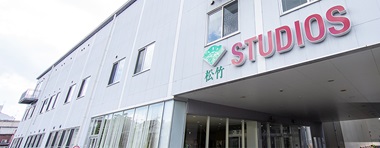

お問い合わせ



